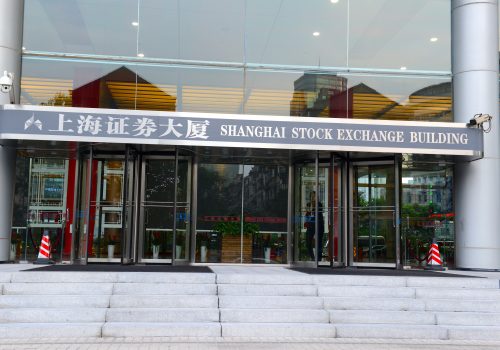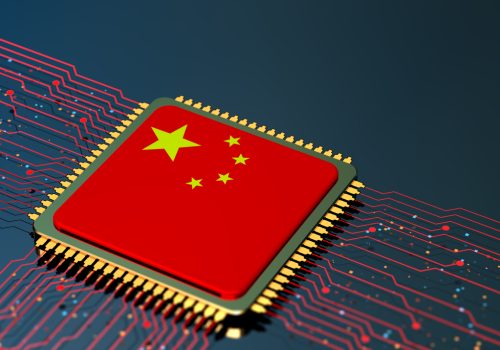Wargaming a Western Freeze of China’s Foreign Reserves
The Russian invasion of Ukraine has provoked comprehensive and stringent sanctions by the United States, Europe and other allied countries against Russian banks, companies, and persons. A noteworthy measure, unprecedented for a large country, is the Western blockade of the foreign reserves of Russia’s central bank—the Bank of Russia (BOR)—immobilizing more than half of its international reserves of $630 billion placed in Western financial institutions. In addition, the BOR has been banned from dealing in the US dollar (USD), euro, and pound sterling.
These measures against a country’s central Bank have raised the geopolitical and sovereign risk of central bank reserves holdings. They have also prompted discussions about the possibility of similar sanctions being imposed on China in the event of its military invasion of Taiwan. The consequences of such sanctions will be more significant than the measures against Russia. China’s economy is ten times bigger than Russia’s; it has much more weight and is more integrated in the global economy and financial system. As a result, China has more means of retaliation against Western sanctions. This article sketches out a possible scenario of Western sanctions on China and its countermeasures to illustrate the scale of possible damages to both sides.
At present, the People’s Bank of China (PBOC) has $3.2 trillion of international reserves of which the exact currency composition is kept a state secret. However, in a 2018 report, China’s State Administration of Foreign Exchanges (SAFE) indicated that the USD share of its assets declined from 79% in 2005 to 58% in 2014, presumably falling further since then. Nevertheless, it is reasonable to assume that most of the PBOC international reserves is in major currencies such as the USD, euro, yen, and pound sterling—including holdings of $1.1 trillion US Treasury securities, $217 billion of Asset Backed Securities (ABS) and $273 billion of equities. In addition, Chinese enterprises have made about $145 billion of foreign direct investment (FDI) in the United States and about $83 billion in the European Union. Many of these enterprises are state owned or can be linked to the Chinese government—such as in the case of Huawei—and can be subject to US and EU sanctions .
In response to a freeze of its foreign reserves and, possibly, other private sector external assets, China could move to nationalize much of the stock of FDI in China, worth $1.9 trillion—focussing on investments from the United States, Europe, and other countries sanctioning China. China can also freeze more than $1.2 trillion of Chinese domestic stocks and bonds owned by foreign investors. Moreover, Chinese entities have incurred about $2.7 trillion of external debt mostly in USD and euro—including a few Chinese sovereign international bonds. China can stop servicing many of those debts, using the same argument as Russia—that it is willing and able to pay, but is prevented from doing so by US government actions. China can even invoke the force majeure clause if such a clause is contained in any of the external debt contracts. The clause allows parties to a contract to suspend performing the contractual obligations due to government actions which are unforeseen at the time of signing the contract. A pause in servicing China’s external debt would inflict substantial losses on Western investors—largely through investment funds and pension funds.
As a result, in terms of balance sheet exposures, China has about $3.4 trillion of identifiable international assets at risk of possible sanctions and up to $5.8 trillion of liabilities to, or assets in China of, international investors and companies largely from Western countries. China therefore has plenty of room to take retaliatory actions. A sanctions and counter sanctions war game suggests that the losses are comparably severe for both sides.
Moreover, such a situation will significantly disrupt economic exchanges—mainly trade between the two sides. Since exports account for 18.5%, or a relatively large share of China’s GDP, with about one-third of that going to the United States and European Union, their disruptions could cause a substantial decline in China’s economic activity. On the other hand, China accounts for 18.6% of US imports—and 22.4% of EU imports—especially in manufactured goods and several critical goods, such as pharmaceuticals and chemicals to make pharmaceutical products. Consequently, disruptions in Chinese imports would cause noticeable shortages, rising prices, and discomfort for consumers and some producers in the importing countries. The macroeconomic impact for the United States may be less severe than for China. However, the lower tolerance of American consumers for goods shortages and inflation would mean the social and political fallout of an all out economic war with China could be more significant in the United States. The economic impact on Europe would also be more substantial as the EU exports more including to China—at 17.6% of GDP compared to 11.7% for the United States .
In short, in a scenario of Western sanctions coupled with Chinese counter measures, both sides will suffer substantial damages. This could lead to a situation of economic MAD—or mutually assured destruction—reinforcing the more catastrophic nuclear MAD. These considerations would set the parameters of the geopolitical rivalry and conflict between China and the West. This will likely intensify in the foreseeable future to encompass all areas of relationship between the two sides, but hopefully will stop short of economic or military wars!
Hung Tran is a nonresident senior fellow at the Atlantic Council, former executive managing director at the International Institute of Finance and former deputy director at the International Monetary Fund.

At the intersection of economics, finance, and foreign policy, the GeoEconomics Center is a translation hub with the goal of helping shape a better global economic future.
Related reading
Image: Chinese and United Stases cargo containers reflecting trade war and restrictions in export and import

